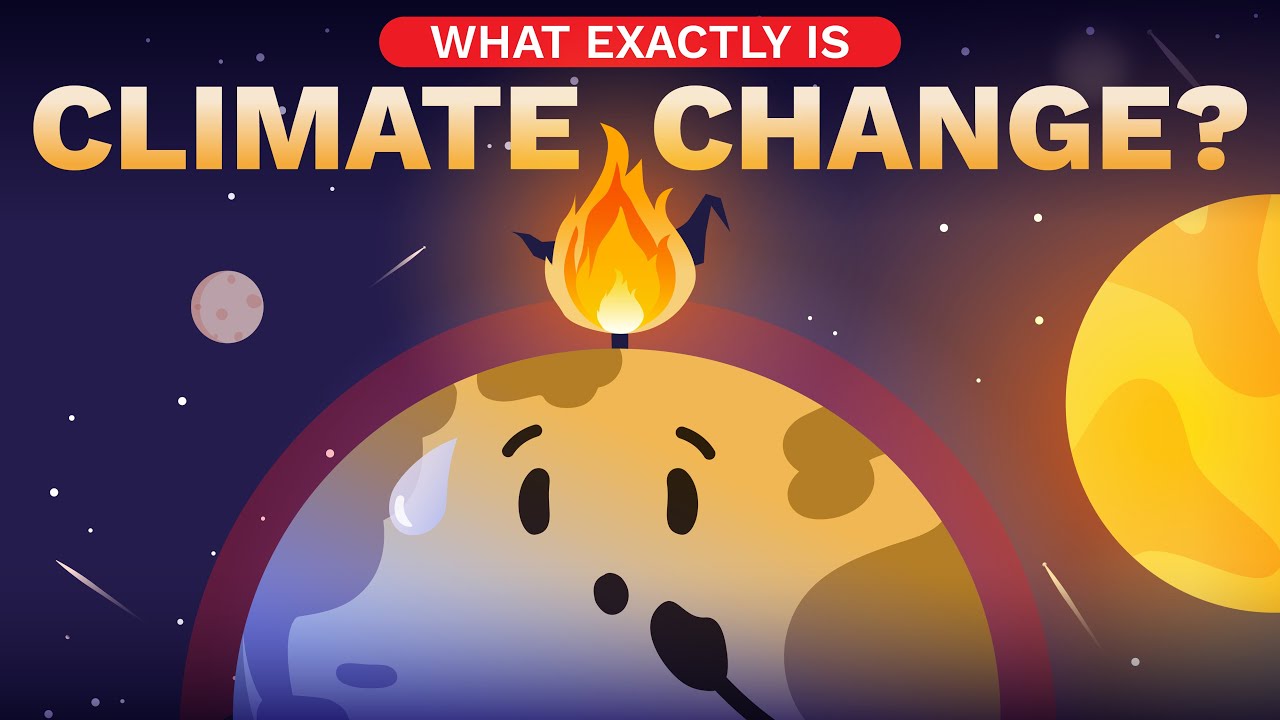What is Ocean Acidification?
Summary
TLDRThe video script highlights the alarming impact of carbon dioxide emissions on the planet, causing global warming and extreme weather events. It explains how the ocean, acting as the world's largest carbon sink, is absorbing CO2 but is becoming less effective as it warms. Increased acidity from CO2 is weakening shells of marine creatures like clams and coral, threatening the ocean's food chain and biodiversity. The script calls for urgent action to address the root cause of the problem: reducing CO2 emissions from burning fossil fuels.
Takeaways
- 🌍 Human activities are increasing carbon dioxide in the atmosphere, causing global warming and extreme weather events.
- 🌊 Oceans have absorbed about half of the CO2 produced by humans, acting as the planet's largest carbon sink.
- ⚠️ As the ocean warms, it absorbs less CO2, which is a concerning trend for climate change mitigation.
- 🐚 Increased CO2 in the ocean is weakening the shells of marine creatures like clams, oysters, and corals.
- 🌱 Sea creatures are finding it harder to build their shells due to increased competition for carbonate ions from hydrogen ions released by CO2.
- 🥢 This could impact food security, as many people rely on seafood as a significant source of protein.
- 🌡 The ocean's increased acidity, due to more CO2, is making it more challenging for marine life to survive.
- 🦈 The decline in shell-building marine life can disrupt the food chain, affecting fish populations and those who rely on them.
- 📉 The ocean has become 30% more acidic, and if unchecked, could lead to the dissolution of shells in the future.
- 🏝️ Coral reefs, which support a quarter of ocean species, are at risk due to the weakening of coral structures.
- 🕊️ While life can adapt, the rapid pace of ocean acidification may outstrip the ability of ecosystems to adjust.
- 🛠️ Addressing the root cause, reducing carbon dioxide emissions from burning fossil fuels, is essential to mitigate these impacts.
Q & A
What is the main cause of the increase in carbon dioxide in the atmosphere?
-The main cause is the burning of fossil fuels, which has been filling up our atmosphere with carbon dioxide.
What are some of the consequences of the planet's warming due to increased carbon dioxide levels?
-Consequences include more frequent and extreme heat waves and floods, making life tougher for people.
Why is the ocean referred to as the planet's biggest carbon sink?
-The ocean has absorbed about half of all the CO2 that humans have emitted, thus acting as the largest carbon sink.
How does the absorption of CO2 by the ocean affect its ability to take up more CO2 as it warms?
-As the ocean warms, it takes up less and less CO2, reducing its capacity to act as a carbon sink.
What impact does increased CO2 in the ocean have on sea creatures with shells or skeletons, like clams, oysters, and coral?
-Increased CO2 in the ocean leads to the weakening of their shells and skeletons due to the reaction of CO2 with seawater, which releases hydrogen ions that compete with shells for carbonate ions.
How does the weakening of shells in sea creatures affect the food chain?
-The weakening of shells makes it harder for these creatures to grow and increases their mortality rate, which in turn affects the fish that rely on them for food, potentially leading to a collapse in the food chain.
What is the relationship between increased CO2 and the acidity of the ocean?
-The reaction of CO2 with seawater releases hydrogen ions, which increase the acidity of the ocean. The ocean has become 30% more acidic since the industrial revolution.
What could be the long-term impact on coral reefs if the ocean continues to acidify?
-Weaker coral reefs could threaten the foundation of the entire ocean food chain, as one in four ocean species live in coral reef ecosystems.
How does the increased acidity of the ocean potentially affect the survival of shelled sea creatures?
-If the ocean's chemistry changes significantly due to increased acidity, shells could start to dissolve, threatening the survival of these creatures.
What is the potential timeframe for the ocean to become more acidic than it has been in millions of years?
-In a few decades, if CO2 emissions continue unchecked, the oceans could become more acidic than they have been in over 20 million years.
What can be done to mitigate the problem of ocean acidification?
-Addressing the source of the problem, which is carbon dioxide emissions from burning fossil fuels, is a key step in mitigating ocean acidification.
Outlines

Этот раздел доступен только подписчикам платных тарифов. Пожалуйста, перейдите на платный тариф для доступа.
Перейти на платный тарифMindmap

Этот раздел доступен только подписчикам платных тарифов. Пожалуйста, перейдите на платный тариф для доступа.
Перейти на платный тарифKeywords

Этот раздел доступен только подписчикам платных тарифов. Пожалуйста, перейдите на платный тариф для доступа.
Перейти на платный тарифHighlights

Этот раздел доступен только подписчикам платных тарифов. Пожалуйста, перейдите на платный тариф для доступа.
Перейти на платный тарифTranscripts

Этот раздел доступен только подписчикам платных тарифов. Пожалуйста, перейдите на платный тариф для доступа.
Перейти на платный тариф5.0 / 5 (0 votes)






